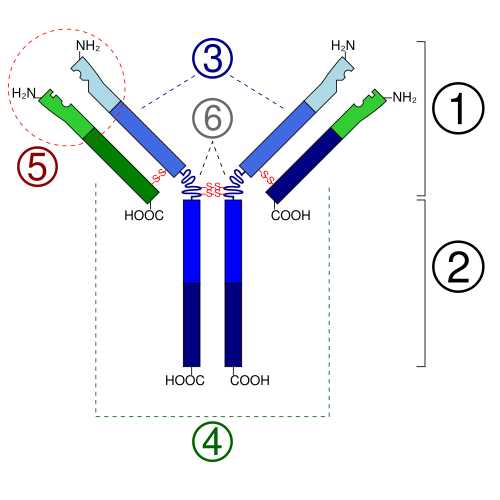IgE and IgD
|
This article was marked by its author as Under construction, but the last edit is older than 30 days. If you want to edit this page, please try to contact its author first (you fill find him in the history). Watch the discussion as well. If the author will not continue in work, remove the template Last update: Thursday, 05 May 2022 at 12.51 pm. |
IgD[edit | edit source]
Monomeric antibody. It is relatively under-represented in serum. It has a relatively low affinity for antigens. It is found mainly on the surface of B-lymphocytes, where it has the function of a receptor for antigen - it forms BcR (B-cellular receptor). It induces the release of histamine from mast cells and basophilic leukocytes. After binding to the antigen, it also participates in the development of hay fever or allergic asthma.
IgE[edit | edit source]
Of all the antibodies, it has the shortest half-life. We find it in an amount even lower than IgD (serum concentration 0.5 g / l) - this also causes its short catabolic half-life. It is homocytotropic - it soon binds to other cells of its own body (mast cells, basophils) to FcεRI receptors. In the bound state, it is far more stable than as free. It releases mediators of inflammation (histamine, serotonin, prostaglandins, leukotrienes).
IgE antibodies are responsible for early hypersensitivity reactions. Their increased concentration is common in allergic (atopic) reactions. They also have a role in antiparasitic defense (stimulates processes of expulsion): mediators, vasodilation, coughing, gutting, increased intestinal peristalsis, diarrhea. They occur especially in the spleen, tonsils, mucous membranes of the lungs and mucous membranes of the gastrointestinal tract.
Sources[edit | edit source]
- HOŘEJŠÍ, Václav – BARTŮŇKOVÁ, Jiřina. Základy imunologie. 3. edition. Praha : Triton, 2008. 280 pp. ISBN 80-7254-686-4.

